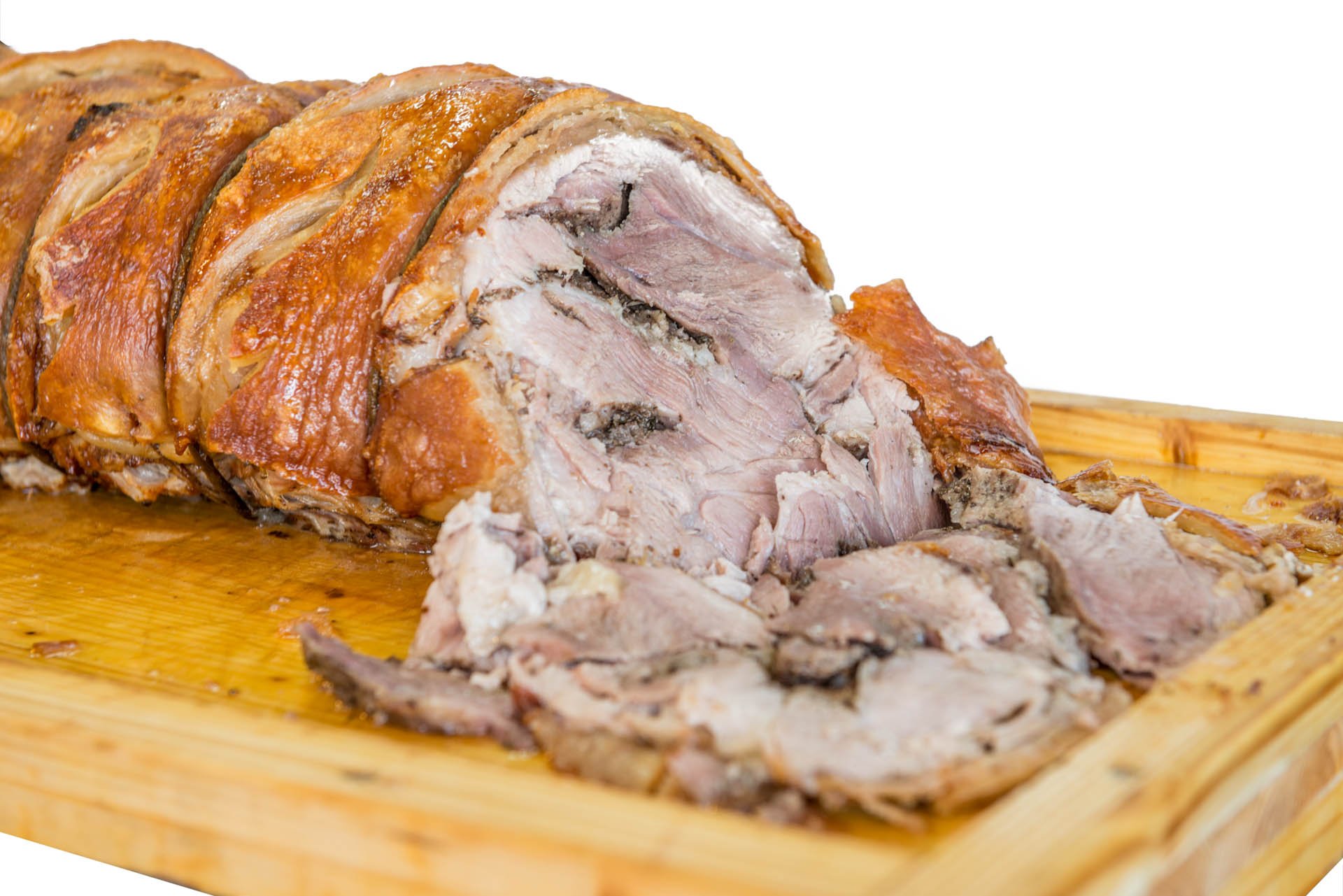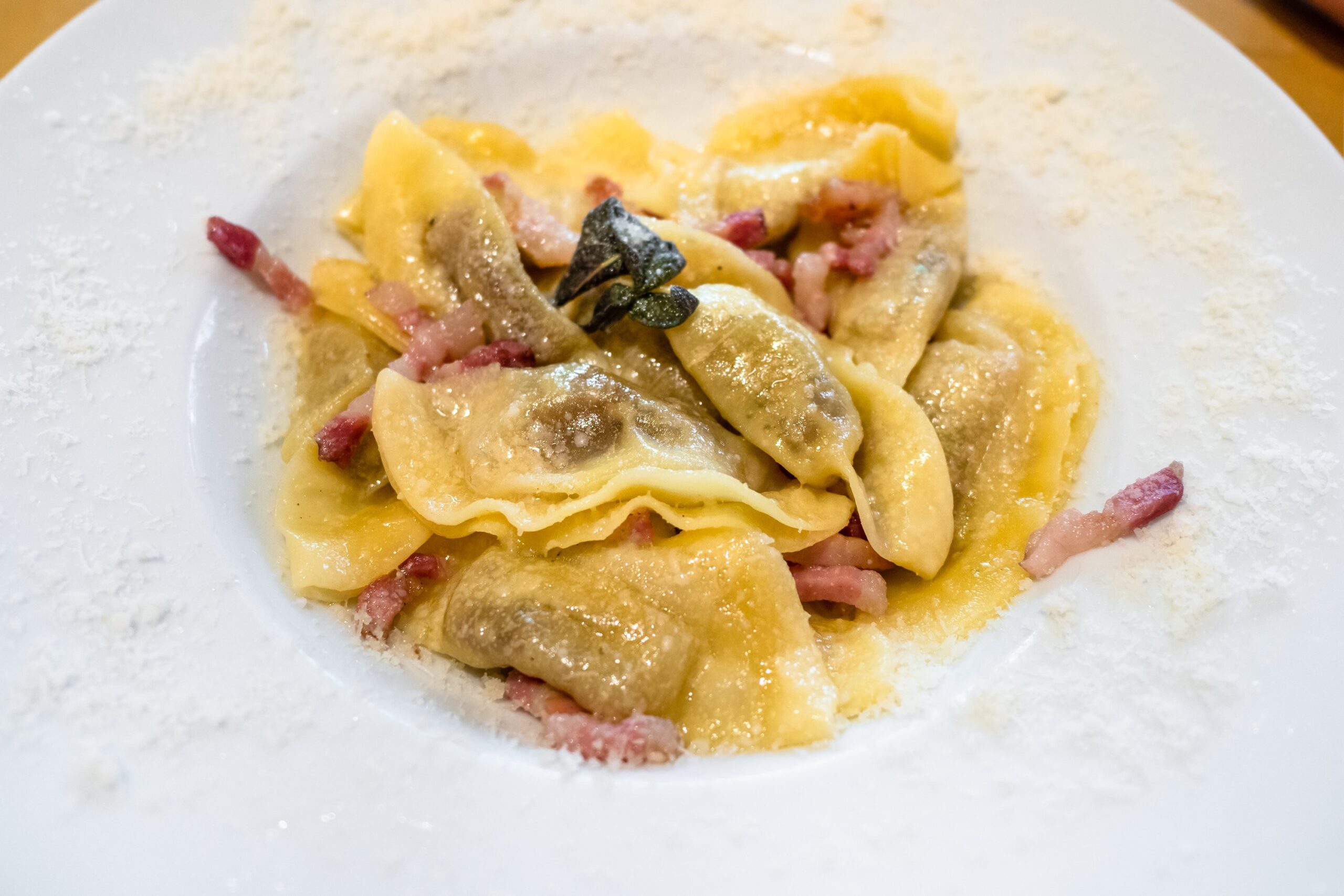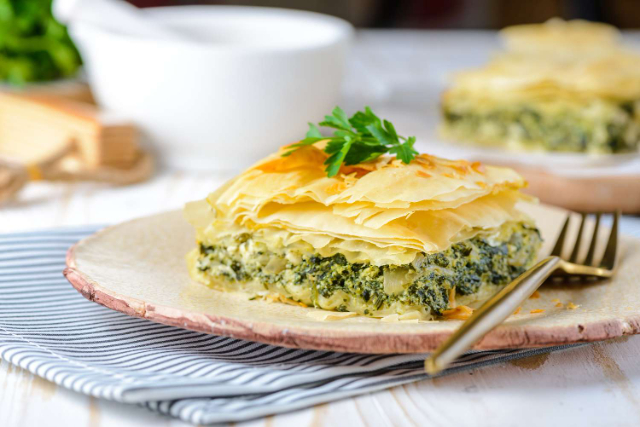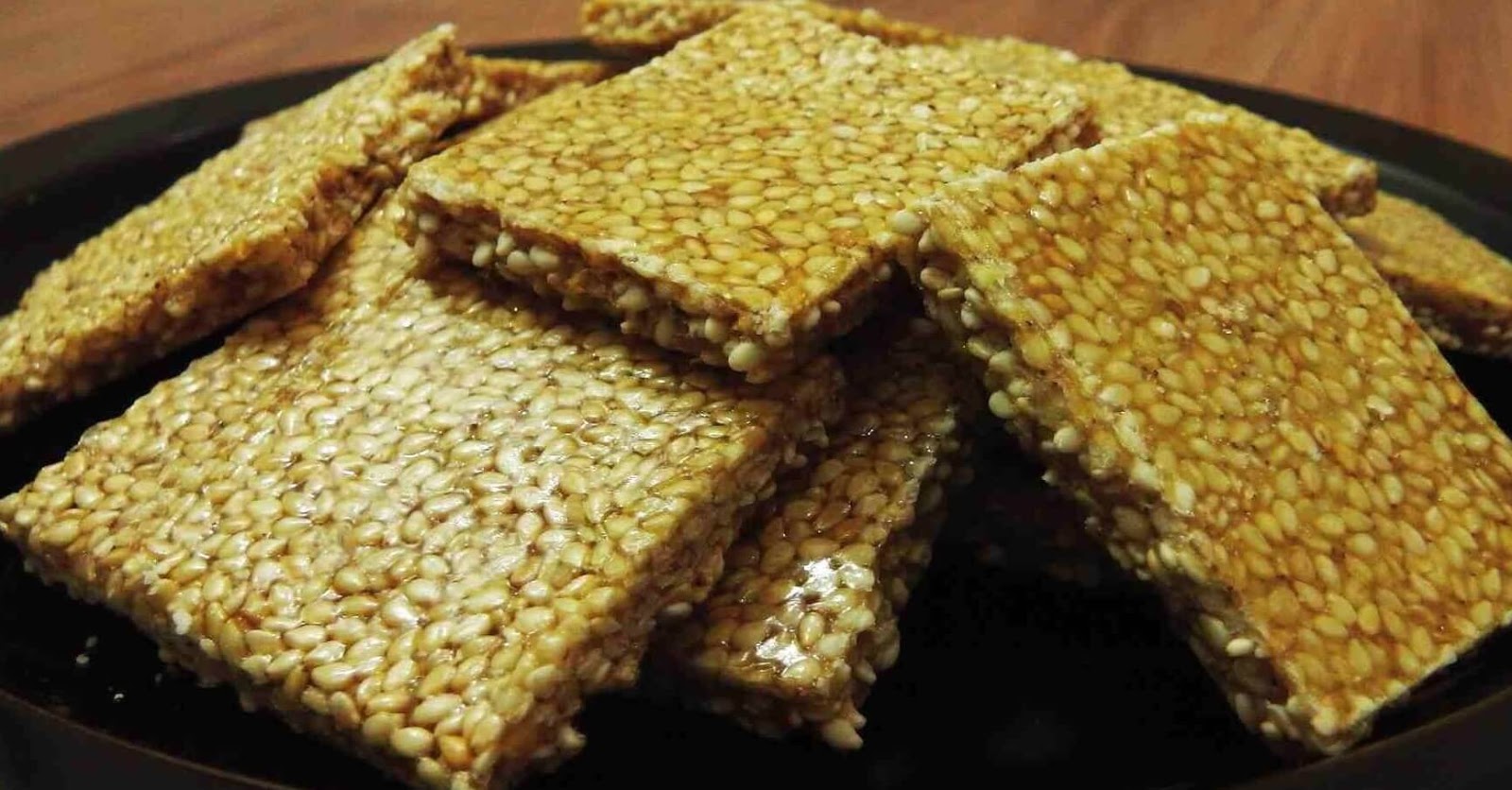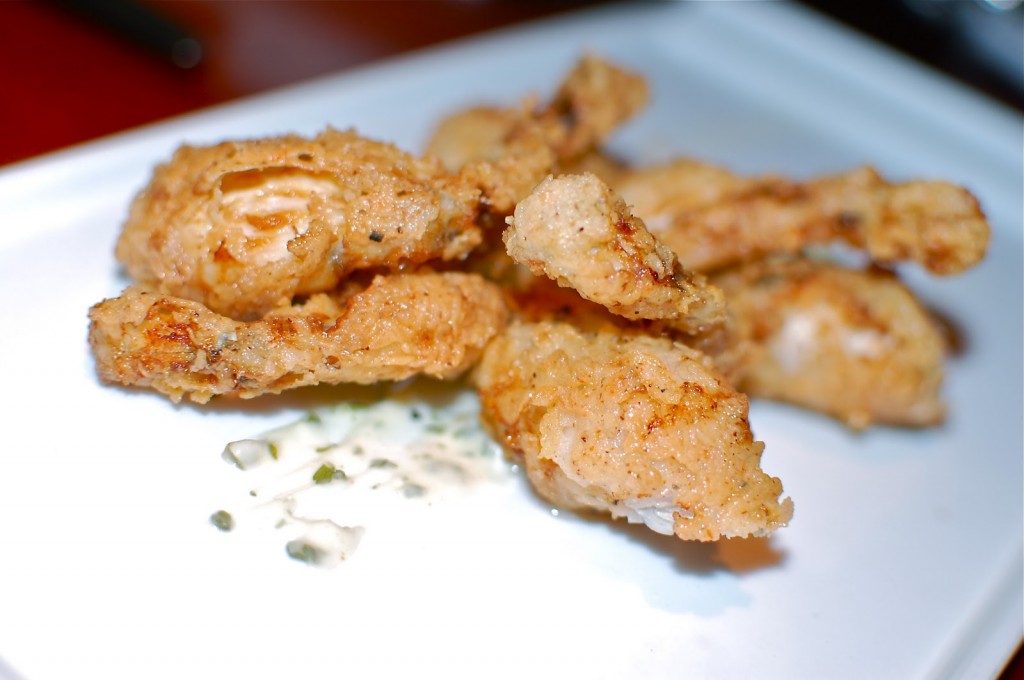Abruzzo “porchetta”, by tradition, originated in the Province of Teramo and partly in the Province of Chieti, where it then spread throughout the region.
It is produced with pork whose live weight is 80-120kg. The pig carcass is placed on a slightly sloping slab, where it is boned completely, leaving the head intact. Subsequently the tail and trotters are cut off at the joints, and the animal is blanched.
It is blanched for a second time, in salted water in which peeled garlic heads have been boiled. The carcass of the animal is salted in and out with 2.5kg of quite fine salt. Lastly it is sprinkled evenly with rosemary and the garlic used for the cooking, the two edges of the carcass are joined and sewn together, at which point it is ready to be oven-roasted (wood-burning ovens are preferable) for 5-7 hours (depending on the weight of the carcass).
The product is consumed straight after cooking and is at its best when still hot.
This type of recipe is rooted in history and is well-consolidated in local tradition. In fact, it is even mentioned in the 1575 historic statues of Campli (Province of Teramo) in chapter 26 of De gabellis.
In 1964 this town began to host the oldest “porchetta” festival in Abruzzo, popular with both Italian and overseas visitors. Roast suckling pig is found at all town fetes and events, and is also sold in Abruzzo’s local markets, where portions of hot “porchetta” or “porchetta” sandwiches are to be found.
